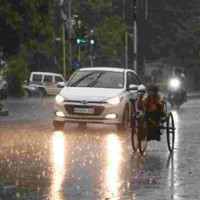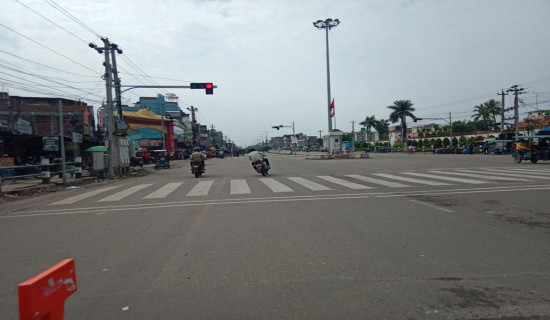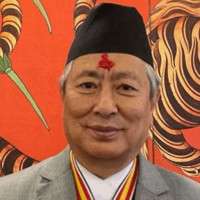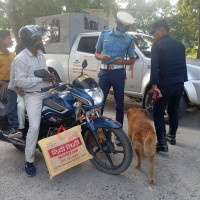- Thursday, 30 October 2025
Ritual wedding mela held in Rukum
BY RAJU LAMICHHANE,Rukum West, Jan. 31: A three-day-long Papini Mela (long-standing tradition of Rukum where two children are married) concluded on Monday. However, the marriage is not against child marriage laws, as it is just a tradition and not a real marriage.
There is a tradition that every year, in the evening of January 28, the bridegroom's side goes to ask for a hand of the bride and in the evening of the next day, they visit the house of bride with janti and later both get married on the same day. On third day, bride's family bids farewell to them.
The villagers select children for the role-play of bride and groom. This year, groom's team from Lower village of Sankha had brought bride of Upper village. On the third day, they had prepared fest and celebration at Sankha Daha.
Sankha Daha is a beautiful place which divides the village into Upper and Lower village. Last year, the bride was from Lower village and groom from Upper village.
Ek Bahadur Pandy, ward chair, informed that the rituals performed in the marriage were all fake so as the bride and groom. Only unmarried are chosen to perform a role as the guardian of the bride and groom and other participants in the marriage ceremony should be also unmarried, he added.
Purna Bahadur Budha, a local leader, said that it was a tradition rather than a desire or compulsion. It is said that the practice of performing dramatic weddings in Sankh Daha began since the beginning of human settlement there. According to Budha, there was a popular belief that people would die in the village if the wedding is not performed every year. Every year two villages of Sankha prepare for Papini Mela and carry out the tradition. An unmarried girl from the community who knows how to dance is chosen as a bride and called 'papini' in the local language.
At the initiation of the bride, they start to stay on the banks of Sankha Daha from the first day of the 10th month of the Nepali calendar. If the bride is from Upper village, they stay on the upper bank and if the bride is from Lower village they stay in the lower bank. They light fire, perform dances and play while staying on the bank and groom preforms saat fanko dance and bride performs panch fanko dance there.
















